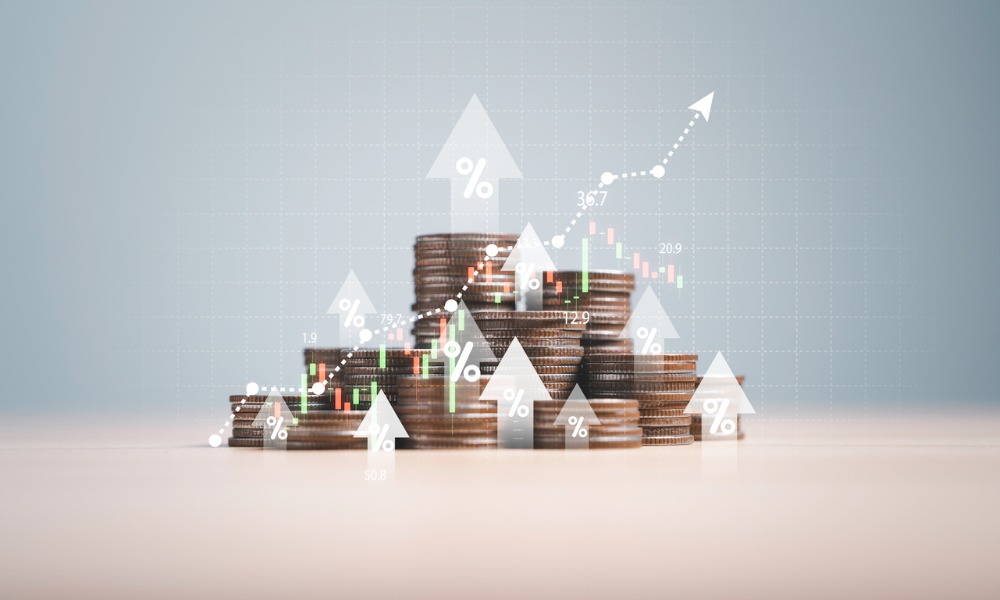Despite high interest rates slowing growth, US consumers continue robust spending, keeping the economy active

The nation’s economy experienced a sharp slowdown last quarter, recording a 1.6 percent annual growth rate amidst high interest rates, according to BNN Bloomberg.
Despite this deceleration, consumer spending remained robust, underscoring its role as a key driver of economic growth.
The Commerce Department’s report indicated that the economy's total output of goods and services slowed significantly in the January-March quarter compared to a brisk 3.4 percent growth rate in the last three months of 2023.
A surge in imports, which subtract from GDP, contributed nearly 1 percentage point to the reduced growth rate for the first quarter. Additionally, businesses cut back on their inventories, another factor that held back growth.
Paul Ashworth, chief North America economist at Capital Economics, acknowledged the volatility of imports and inventory figures but emphasized the overall resilience of the economy's core components. “There is still a lot of positive underlying momentum,” he said.
Inflation remains a significant concern, with a report on Friday showing a jump to a 3.4 percent annual rate from January through March, up from 1.8 percent in the previous quarter. Core inflation, which excludes volatile food and energy prices, rose to a 3.7 percent rate from 2 percent in the fourth quarter of 2023.
Consumer spending, which is a crucial indicator of economic health, grew at a 2.5 percent annual rate from January through March. This rate, while solid, marked a decrease from over 3 percent in the previous two quarters.
Services spending surged by 4 percent, the fastest pace since mid-2021, but spending on goods like appliances and furniture slightly declined by 0.1 percent, the first drop since the summer of 2022.
Gregory Daco, chief economist at the tax and consulting firm EY, described the underlying economy as solid, though moderating from last year's rapid pace.
He interpreted the rise in imports largely responsible for the first-quarter slowdown as “a sign of solid demand” by American consumers for foreign goods. However, Daco cautioned, “The economy's momentum is cooling.”
The US economic climate has become a focal point in the election season, with inflation slowing significantly from its 9.1 percent peak in 2022 yet remaining above pre-pandemic levels.
This issue has led Republican critics of President Joe Biden to blame him for high prices to influence his re-election campaign. Despite a healthy job market and a retreating inflation rate, many Americans still hold Biden accountable for the high costs.
The GDP growth of 1.6 percent last quarter ended six consecutive quarters of at least 2 percent annual growth and marked the slowest expansion since the economy shrank in the first and second quarters of 2022.
This gradual slowdown is largely attributed to higher borrowing rates for loans and business loans resulting from the Federal Reserve's 11 interest rate hikes aimed at controlling inflation.
Internationally, the US continues to outperform other advanced economies, with the International Monetary Fund projecting a 2.7 percent growth for the entire year of 2024, outpacing nations like Germany, France, Italy, Japan, the United Kingdom, and Canada.
However, the strong growth also poses challenges for inflation management, as IMF’s managing director Kristalina Georgieva warned that it might prolong the time needed for inflation to meet the Fed's 2 percent target.
Despite predictions of a looming recession and the economic disturbances caused by global events like Russia’s invasion of Ukraine, the US economy has shown remarkable resilience.
Employment has remained robust, and the unemployment rate has been below 4 percent for 26 consecutive months, the longest streak since the 1960s.
Although inflation has decreased to 3.5 percent, recent signals from the Fed suggest a cautious approach towards reducing rates amidst ongoing inflationary pressures.



